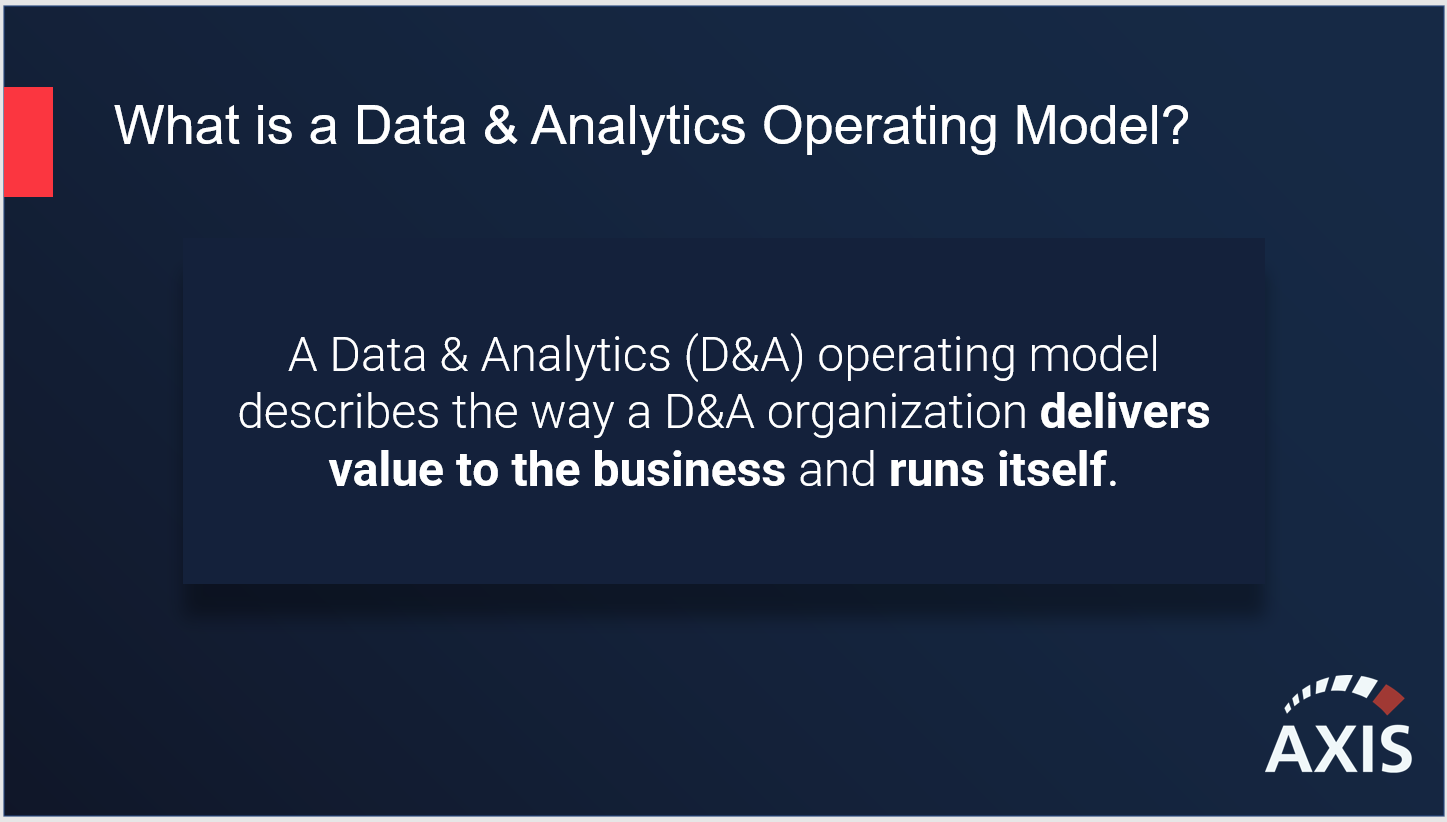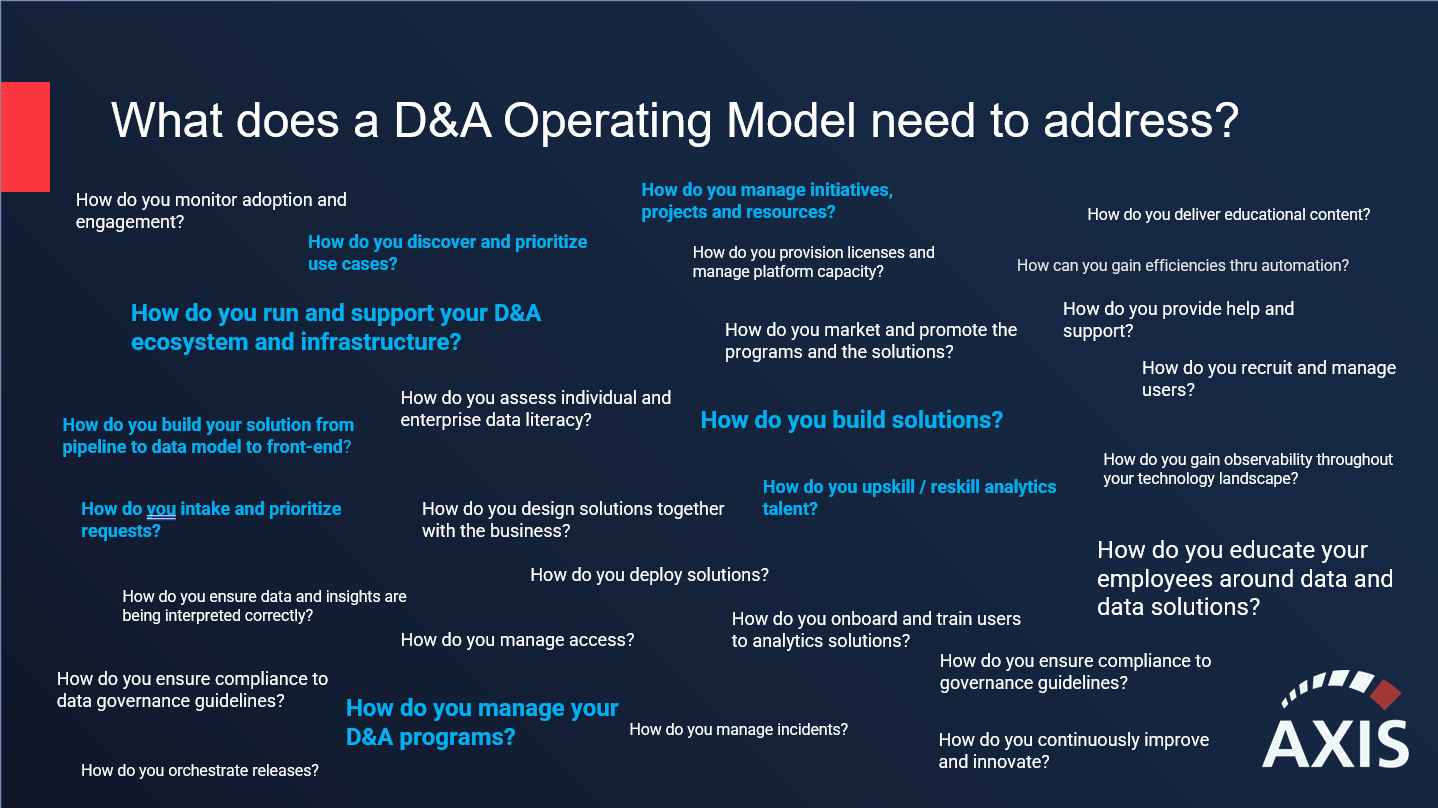Businesses know that data capabilities can be used to gain competitive advantage. The more meaningful data and appropriate analytics you have, the more you know about your customers, your products, and your operations, the better decisions you can make and the better your business can run. Or, at least that’s the theory.
Our Increasingly Fragmented World of Data and Analytics
As the world moves forward, we find ourselves increasingly awash in data – and with that, increasingly awash in analytics and analytics tools, such as business intelligence (BI) platforms, data science and machine learning products, and productivity-enhancing applications. A recent study revealed that, on average, enterprises get their data from over 400 data sources to feed these analytics, data science and BI platforms(1). There is no shortage of data and in this era of ongoing cloud and digital transformations; the data and analytics explosion continues outward, akin to the Big Bang . One hallmark of the Digital Transformation era is the adoption of Software as a Service (SaaS) applications. Recent studies suggest that organizations were using an average of 110 SaaS applications at the end of 2021 – a dramatic increase compared to 2015(2). Another recent study on the sprawl of SaaS applications estimated that very large organizations use as many as 254 SaaS applications(3). A sizable portion of these SaaS applications use, create, and export even more data.
Is it any wonder that the modern era is incredibly complex? Not only have data and analytics proliferated significantly since the advent of Cloud technologies, but the speed and processing improvements that accompany them, have allowed enterprises to generate and analyze even greater amounts of data. The complexity of navigating the proper collection, use and re-use of data and analytics outcomes continues to increase, especially as recent events, such as the COVID-19 pandemic, the “Great Resignation” and the remote work revolution, serve as digital accelerants driving the adoption of more and more digital tools(4). This is fueling the acceleration of Digital Transformation investments to enable the future of work(5) – powering the growth of Cloud and SaaS markets by 34% year over year(6).
Fragmentation Requires an Operating Model to Bring Data and Analytics Chaos to Heel
As organizations large and small continue to invest in Digital Transformation and Cloud, the risk for chaos in internal operations expands dramatically. In this highly complex world of digital work, employees may struggle when trying to navigate the virtual workplace. This heightened level of digital, cloud and data complexity can create confusion, resulting in process impairments and reduced productivity, if not governed properly, which can expose companies to competitive shortfalls.
As the volume of data grows, brand new needs and use case for analytics also increase. These evolving needs are cumulative to legacy processes and programs that run in parallel to the new digital and cloud investments. More often than not, organizations in the midst of transitions from older technologies have to also keep track of variations in older data and analytics tools in addition to techniques and processes until there’s enough comfort level and trust in new systems before they can sunset legacy products and procedures. Juggling the old and the new while making sense of everything in the meantime just adds to the chaos and burden on overtaxed data and analytics teams.
This trend exacerbates the situation organizations face as they confront fundamental data and analytics challenges, such as:
- A lack of comfort level or trust in using analytics and data (or the infrastructure that supports these tools);
- Fragmented, non-standardized use of analytics and data across functions;
- Siloed processes and pockets of data and analytics expertise that are not shared across enterprise functions, and
- A lack of standardization on reliable enterprise analytics tools (vs. Excel and its “many sources of truth”) (7).
Navigating the use of data and analytics requires much more than just investing in technology; in some cases, dropping new technologies in place can create roadblocks for employees. Leaders and stewards of data and analytics, at a higher process governance level, need a clear blueprint for how value will be delivered to their internal customers whether those customers are human data consumers or automations such as AI and digital workers.

Such a value-delivery blueprint must be embodied in the operating model. Gartner defines the essence of an operating model as follows:
An operating model is the blueprint for how value will be created and delivered to target customers. An operating model brings the business model to life; it executes the business model.
An information and technology (I&T) operating model [such as one for data and analytics] represents how an organization orchestrates its I&T capabilities to achieve its strategic objectives.
An enterprise operating model describes how the enterprise configures its capabilities to execute its actions to deliver business outcomes as defined in the business model.”(8)
How a D&A Operating Model Helps Surmount Modern Digital and Cloud Challenges
Gartner also says that the key to succeeding in the Digital Transformation era is a strong competency with Data and Analytics(9). In addition, from a business value driver perspective, we also see how new demands for data and analytics can lead to target business outcomes, as these examples reveal:
|
Business Value Drivers |
Desired Business Outcome |
Example Digital or Cloud Tactic |
Resulting New Data or Analytics Need |
|
Revenue Growth |
Increase Revenue |
Invest in paid digital display advertising |
Paid digital ad reporting and analysis tool; digital marketing analysis skills for paid media |
|
Cost Reduction / Avoidance |
Reduce Costs |
Simplify onto one enterprise analytics tool vs. many different tools |
Analytics adoption analysis and skills |
|
Operational Efficiency |
Reduce Errors |
Invest in AI to improve data quality |
Data science and AI skills to manage the AI and optimize its performance |
|
Customer Satisfaction |
Improve customer satisfaction scores |
Create a new customer loyalty program and invest in customer loyalty software |
Customer loyalty data analysis; integration of data with CRM |
|
Employee Retention |
Improve employee retention |
Create new digital experiences for employees |
Technology adoption data and analysis; skills to aid with change management |
|
Risk Mitigation |
Reduce insider trading fraud |
Invest in AI to detect fraud patterns (augmenting the risk team with AI) |
Data science and AI tools and skills to manage the AI and optimize its performance |
Note how each business driver and target outcome create new demands for more data and analytics. The only way to effectively manage it all, is by implementing an effective Data and Analytics Operating Model. With a well-designed, comprehensive Data and Analytics Operating Model, leaders can mitigate operational risk and enable organizations to thrive in these dynamic times.
A well-designed Data and Analytics Operating Model can also help the stewards and leaders of data and analytics teams answer some of the larger questions, such as:
- What roles and talent do I need for a successful operating model?
- What technologies and tools are relevant for our organization?
- What skills and techniques should different roles leverage, such as coding or data modeling?
- How do we improve data management and data governance, while maintaining flexibility for innovation?
- Can data literacy help our data and analytics team focus on high-value initiatives?
- Where should the data and analytics team “sit” within an organization – as a standalone team, or integrated with business units?
An effective Data and Analytics Operating Model should describe the way that a data and analytics organization delivers value to the business and runs itself. The data flowing through your systems is what powers your business, equipping the enterprise with actionable insight, resulting in high quality innovations or products, and driving unique and valuable customer experiences. To achieve any of that, you first must unlock the value of your data – and that requires a data and analytics model that defines the architecture, governance, and analytics plus the revolving people, process, and technologies that enable you to gather, analyze, share, and interpret that data intelligently, intuitively, and securely.
Axis approaches the creation of Data and Analytics Operating Models by looking at an enterprise’s value drivers through the dual lenses of key activities and key resources. An example of a key activity is education. In the Axis Group Enterprise Data Literacy programs, key resources include considerations such as people (helping organizations to define roles and capabilities), along with identifying the right technologies, data, standards, and processes needed for a given company’s success.
In constructing an effective Data and Analytics Operating Model, there are many requirements that you must consider:

Some organizations think that they have “checked the operating model box” by merely re-organizing their data and analytics teams to be more centralized (what the International Institute of Analytics calls an “analytics organizing model”)(11). As the above sample questions show, however, there is far more to creating the right Data and Analytics Operating Model than re-aligning resources by geographic (or virtual) sleight-of-hand.
Building the “Right” D&A Operating Model to Achieve Aspirational Business Outcomes
The fact is: your organization does have a Data & Analytics Operating Model in place. It might not be well-documented or working to achieve your organization’s target objectives, key results, and outcomes, but it is there. As you evaluate the existing Operating Model, ask yourself if your data and analytics team is really delivering value to the larger organization:
- Is your team able to easily show its value to the larger organization? Or are you constantly seen as a cost center, facing questions about the ROI of investments in D&A resources and capabilities?
- Can your team keep up with current demands for data and analytics? Are they set up for success to handle what’s coming next, due to ongoing digital and cloud investments by the organization at large?
- Do data consumers in the organization understand how to work with data and analytics? Or are they confused by the sprawl of SaaS applications and out-of-date procedures and standards for working with data?
- Can your data and analytics organization service the needs of all data consumers – including “the bots” such as AI-driven applications, and digital workers such as those virtually embodied by Robotic Process Automation tools?
In addition to these considerations, do you feel that your organization is able to compete on data and analytics against industry peers? Recent research shows that organizations that are highly competitive on the use of data and analytics are often industry leaders versus. other firms in their industry sector(11). Are you keeping up with competitors or falling behind?
The “right” Data and Analytics Operating Model can not only help address these questions and set your larger organization up to win over industry peers, but also, it can help you become more effective at attracting and retaining hard-to-find data and analytics talent.
Moving Towards a Future-Proof Data & Analytics Operating Model
If you find yourself in need of a Data and Analytics Operating Model update or overhaul, follow these steps:
- Start by cataloging and documenting your current data and analytics activities and resources.
- Collect feedback about how your data and analytics team delivers value.
- Review your findings against the larger organization’s mission, vision, target objectives, and future plans.
- Engage a neutral third-party to help you assess your current operating model and help ensure that your vision for the future is aligned with both your internal organization and your industry peers at large.
The journey to the right Data and Analytics Operating Model begins with being honest about your current state and being brave enough to make changes that will set your team up for success and provide leverage to leave your competitors in the dust.
About Axis Group
With 25 years of experience, Axis Group® delivers innovative data and analytics solutions and services to enterprise organizations. Axis Group meets companies on their digital transformation journeys to improve digital literacy and data fluency. Focusing on each company’s unique culture and digital maturity, Axis Group drives analytics adoption to enable self-sufficiency resulting in smarter teams and better business outcomes. Axis Group combines business acumen, leadership, and industry-specific experience with technical expertise to tackle the toughest data problems. Axis Group is The Enablement Company™.
End Notes:
- Timothy King, “Companies Are Drawing from over 400 Different Data Sources on Average,” Data Integration Solutions Review, November 19, 2019 https://solutionsreview.com/data-integration/companies-are-drawing-from-over-400-different-data-sources-on-average/
- Lionel Vailshery, “Average number of software as a service (SaaS) applications used by organizations worldwide from 2015 to 2021, Statista, Feb. 16, 2022 ”https://www.statista.com/statistics/1233538/average-number-saas-apps-yearly/
- Various authors, “The State of SaaS Sprawl in 2021,” Productiv eBook report, Sept. 15, 2021 The State of SaaS Sprawl in 2021 - Productiv
- Esther Shein, “COVID-19 is ‘the digital accelerant of the decade,’ forcing businesses to adapt quickly “, TechRepublic, July 15, 2020 https://www.techrepublic.com/article/covid-19-is-the-digital-accelerant-of-the-decade-forcing-businesses-to-adapt-quickly/
- Carla Rudder, “Digital transformation: What CIOs are accelerating during the pandemic,” The Enterprisers Project, May 11, 2020 https://enterprisersproject.com/article/2020/5/digital-transformation-accelerating
- Various authors, “Huge Cloud Market Still Growing at 34% Per Year; Amazon, Microsoft & Google Now Account for 65% of the Total,” Synergy Research, April 28, 2022 https://www.srgresearch.com/articles/huge-cloud-market-is-still-growing-at-34-per-year-amazon-microsoft-and-google-now-account-for-65-of-all-cloud-revenues
- Thomas H. Davenport, Nitin Mittal, and Irfan Saif, “What Separates Analytical Leaders From Laggards?” MIT Sloan Management Review, Feb. 3, 2020 https://sloanreview.mit.edu/article/what-separates-analytical-leaders-from-laggards/
- Gartner, “Operating Model,” https://www.gartner.com/en/information-technology/glossary/operating-model
- Christy Pettey, “Why Data and Analytics Are Key to Digital Transformation,” Gartner, Marcy 8, 2019 https://www.gartner.com/smarterwithgartner/why-data-and-analytics-are-key-to-digital-transformation/
- Jason Larson, “Analytics Organizing Models – Where There Is No Single Source of Truth,” International Institute for Analytics, March 21, 2022 https://iianalytics.com/community/blog/analytics-organizing-models-where-there-is-no-single-source-of-truth
- Jack Phillips & David Ailes, “Analytics Maturity & Company Performance / ROI,” International Institute of Analytics, July 2020, https://www.iianalytics.com/analytics-maturity-company-performanceroi
 Chris Johannessen serves Axis Group as Chief Digital Strategist, providing advisory services to our global client base on topics such as Analytics Operating Models, Data Literacy and Digital Transformation, while also helping to nurture HELIX, our category creating Analytics Enablement® Platform. He also serves the global data and analytics community as a contributor and editor for publications such as the Harvard Business Review and The Journal of AI, Robotics and Workplace Automation. In addition, he serves as an academic advisor to institutions such as The Wharton School (Penn), Temple University and DeSales University.
Chris Johannessen serves Axis Group as Chief Digital Strategist, providing advisory services to our global client base on topics such as Analytics Operating Models, Data Literacy and Digital Transformation, while also helping to nurture HELIX, our category creating Analytics Enablement® Platform. He also serves the global data and analytics community as a contributor and editor for publications such as the Harvard Business Review and The Journal of AI, Robotics and Workplace Automation. In addition, he serves as an academic advisor to institutions such as The Wharton School (Penn), Temple University and DeSales University.
